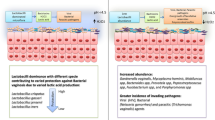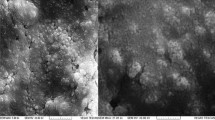Abstract
Escherichia coli is one of the main causes of uncomplicated urinary tract infections and responsible of vaginal infections. Lactobacilli can inhibit this pathogen by the production of antimicrobial substances as organic acids, hydrogen peroxide and/or bacteriocins. The aim of this work was to study the effects of beneficial vaginal lactobacilli on E. coli through in vitro experiments. The inhibitory activity of three vaginal Lactobacillus strains against E. coli was assessed using the agar plate diffusion. Moreover, the effect of Lactobacillus reuteri CRL (Centro de Referencia para Lactobacilos Culture Collection) 1324 on the adhesion and internalization capabilities of E. coli was studied on HeLa cells. Two Lactobacillus strains inhibited the growth of the pathogens by production of organic acids. L. reuteri CRL 1324 reduced the adhesion and internalization of E. coli 275 into HeLa cells. The results obtained suggest that L. reuteri CRL 1324 can be considered as a probiotic candidate for further in vivo studies for the prevention or treatment of urinary tract infections caused by E. coli.



Similar content being viewed by others
References
Almeida RA, Matthews KR, Cifrian E, Guidry AJ, Oliver SP (1996) Staphylococcus aureus invasion of bovine mammary epithelial cells. J Dairy Sci 79:1021–1026
Anderson GG, Goller CC, Justice S, Hultgren SJ, Seed PC (2010) Polysaccharide capsule and sialic acid-mediated regulation promote biofilm-like intracellular bacterial communities during cystitis. Infect Immun 78:963–975
Atassi F, Servin AL (2010) Individual and co-operative roles of lactic acid and hydrogen peroxide in the killing activity of enteric strain Lactobacillus johnsonii NCC933 and vaginal strain Lactobacillus gasseri KS120.1 against enteric, uropathogenic and vaginosis-associated pathogens. FEMS Microbiol Lett 304:29–38
Atassi F, Brassart D, Grob P, Graf F, Servin AL (2006) Vaginal Lactobacillus isolates inhibit uropathogenic Escherichia coli. FEMS Microbiol Lett 257(1):132–138
Baron F, Cochet MF, Ablain W, Grosset N, Madec MN, Gonnet F, Jan S, Gautier M (2006) Rapid and cost-effective method for micro-organism enumeration based on miniaturization of the conventional plate-counting technique. Dairy Sci Technol 3:251–257
Beerepoot MA, terRiet G, Nys S, van der Wal WM, de Borgie CA, de Reijke TM, Prins JM, Koeijers J, Verbon A, Stobberingh E, Geerlings SE (2012) Lactobacilli vs antibiotics to prevent urinary tract infections: a randomized, double-blind, non inferiority trial in postmenopausal women. Arch Intern Med 172:704–712
Bouchard DS, Rault L, Berkova N, Le Loir Y, Even S (2013) Inhibition of Staphylococcus aureus invasion into bovine mammary epithelial cells by contact with live Lactobacillus casei. Appl Environ Microbiol 79(3):877–885
Bouchard DS, Seridan B, Saraoui T, Rault L, Germon P, Gonzalez-Moreno C, Nader-Macías FM, Baud D, François P, Chuat V, Chain F, Langella P, Nicoli J, Le Loir Y, Even S (2015) Lactic acid bacteria isolated from bovine mammary microbiota: potential allies against bovine mastitis. PLoS One 10(12):e0144831
Cadieux PA, Burton J, Devillard E, Reid G (2009) Lactobacillus by-products inhibit the growth and virulence of uropathogenic Escherichia coli. J Physiol Pharmacol 60(Suppl 6):13–18
De Man JC, Rogosa M, Sharpe ME (1960) A medium for the cultivation of lactobacilli. J Appl Bacteriol 23:130–135
De Gregorio PR, Juárez Tomás MS, Nader-Macías ME (2016) Immunomodulation of Lactobacillus reuteri CRL1324 on Group B Streptococcus Vaginal Colonization in a Murine Experimental Model. Am J Reprod Immunol 75(1):23–35
Delley M, Bruttin A, Richard M, Affolter M, Rezzonico E, Brück WM (2015) In vitro activity of commercial probiotic Lactobacillus strains against uropathogenic Escherichia coli. FEMS Microbiol Lett 362(13):fnv096
Ejrnaes K, Stegger M, Reisner A, Ferry S, Monsen T, Holm SE, Lundgren B, Frimodt-Møller N (2011) Characteristics of Escherichia coli causing persistence or relapse of urinary tract infections: phylogenetic groups, virulence factors and biofilm formation. Virulence 2:528–537
Falagas ME, Betsi GI, Tokas T, Athanasiou S (2006) Probiotics for prevention of recurrent urinary tract infections in women. A review of the evidence from microbiological and clinical studies. Drugs 66:1253–1261
FAO/WHO Report (2001) Evaluation of health and nutritional properties of powder milk and live lactic acid bacteria. http://www.fao.org/es/ESN/Probio/probio.htm. Accessed July 2016
Geerlings SE, Beerepoot MA, Prins JM (2014) Prevention of recurrent urinary tract infections in women: antimicrobial and nonantimicrobial strategies. Infect Dis Clin North Am 28(1):135–147
Gudiña EJ, Rocha V, Teixeira JA, Rodrigues LR (2010) Antimicrobial and antiadhesive properties of a biosurfactant isolated from Lactobacillus paracasei ssp. Paracasei A20. Lett Appl Microbiol 50:419–424
Gupta K, Stapleton AE, Hooton TM, Roberts PL, Fennell CL, Stamm WE (1998) Inverse association of H2O2-producing lactobacilli and vaginal Escherichia coli colonization in women with recurrent urinary tract infections. J Infect Dis 178:446–450
Hill C, Guarner F, Reid G, Gibson GR, Merenstein DJ, Pot B, Morelli L, Canani RB, Flint HJ, Salminen S, Calder PC, Sanders ME (2014) Expert consensus document: the International Scientific Association for Probiotics and Prebiotics consensus statement on the scope and appropriate use of the term probiotic. Nat Rev Gastro Enterol Hepatol 11:506–514
Hou C, Zeng X, Yang F, Liu H, Qiao S (2015) Study and use of the probiotic Lactobacillus reuteri in pigs: a review. J Anim Sci Biotechnol 6(1):14
Human Microbiome Project Consortium (2012) Structure, function and diversity of the healthy human microbiome. Nature 486:207–214
Johnson JR, Russo TA (2005) Molecular epidemiology of extraintestinal pathogenic (uropathogenic) Escherichia coli. Int J Med Microbiol 295:383–404
Joo HM, HyunYJ, Myoung KS, Ahn YT, Lee JH, Huh CS, Han MJ, Kim DH (2011) Lactobacillus johnsonii HY7042 ameliorates Gardnerella vaginalis-induced vaginosis by killing Gardnerella vaginalis and inhibiting NF-κB activation. Int Immunopharmacol 11:1758–1765
Joo HM, Kim KA, Myoung KS, Ahn YT, Lee JH, Huh CS, Han MJ, Kim DH (2012) Lactobacillus helveticus HY7801 ameliorates vulvovaginal candidiasis in mice by inhibiting fungal growth and NF-κB activation. Int Immunopharmacol 14:39–46
Juárez Tomás MS, Zonenschain D, Morelli L, Nader-Macías ME (2005) Characterization of potentially probiotic vaginal lactobacilli isolated from Argentinean women. Br J Biomed Sci 62:170–174
Juárez Tomás MS, Saralegui Duhart CI, De Gregorio PR, Vera Pingitore E, Nader-Macías ME (2011) Urogenital pathogen inhibition and compatibility between vaginal Lactobacillus strains to be considered as probiotic candidates. Eur J Obstet Gynecol Reprod Biol 159:399–406
Leccese Terraf MC, Juárez Tomás MS, Nader-Macías ME, Silva C (2012) Screening of biofilm formation by beneficial vaginal lactobacilli and influence of culture media components. J Appl Microbiol 113:1517–1529
Leccese Terraf MC, Mendoza LM, Juárez Tomás MS, Silva C, Nader-Macías ME (2014) Phenotypic surface properties (aggregation, adhesion and biofilm formation) and presence of related genes in beneficial vaginal lactobacilli. J Appl Microbiol 117:1761–1772
Li XJ, Yue LY, Guan XF, Qiao SY (2008) The adhesión of putative probiotic lactobacilli to cultured epitelial cells and porcine intestinal mucus. J Appl Microbiol 104(4):1082–1091
Martín R, Suárez JE (2010) Biosynthesis and degradation of H2O2 by vaginal lactobacilli. Appl Environ Microbiol 76:400–405
Martín R, Soberón N, Vaneechoutte M, Flórez AB, Vázquez F, Suárez JE (2008) Characterization of indigenous vaginal lactobacilli from healthy women as probiotic candidates. Int Microbiol 11:261–266
Martín R, Sánchez B, Suárez JE, Urdaci MC (2012) Characterization of the adherence properties of human Lactobacilli strains to be used as vaginal probiotics. FEMS Microbiol Lett 328(2):166–173
Martín R, Martín C, Escobedo S, Suárez JE, Quirós LM (2013) Surface glycosaminoglycans mediate adherence between HeLa cells and Lactobacillus salivarius Lv72. BMC Microbiol 13:210
Mirmonsef P, Gilbert D, Veazey RS, Wang J, Kendrick SR, Spear GT (2012) A comparison of lower genital tract glycogen and lactic acid levels in women and macaques: implications for HIV and SIV susceptibility. AIDS Res Hum Retrovir 28:76–81
Mobley HL, Donnenberg MS, Hagan EC (2009) Uropathogenic Escherichia coli. In: Böck A (ed) EcoSal-Escherichia coli and Salmonella: cellular and molecular biology. ASM Press, Washington, DC
Mulvey MA, Schilling JD, Hultgren SJ (2001) Establishment of a persistent Escherichia coli reservoir during the acute phase of a bladder infection. Infect Immun 69(7):4572–4579
Mysorekar IU, Hultgren SJ (2006) Mechanisms of uropathogenic Escherichia coli persistence and eradication from the urinary tract. Proc Natl Acad Sci USA 103:14170–14175
Nader-Macías MEF, Silva de Ruiz C, Ocaña VS, Juárez Tomás MS (2008) Advances in the knowledge and clinical applications of lactic acid bacteria as probiotics in the urogenital tract. Curr Women’s Health Rev 4:240–257
Nielubowicz GR, Mobley HL (2010) Host-pathogen interactions in urinary tract infection. Nat Rev Urol 7:430–441
O’Hanlon DE, Moench TR, Cone RA (2013) Vaginal pH and microbicidal lactic acid when lactobacilli dominate the microbiota. PLoS One 8(11):e80074
Ocaña VS, Bru E, de Ruiz Holgado AP, Nader-Macías ME (1999a) Surface characteristics of lactobacilli isolated from human vagina. J Gen Appl Microbiol 45:203–212
Ocaña VS, Ruiz Holgado AP, Nader-Macias ME (1999b) Characterization of a bacteriocin-like substance produced by a vaginal Lactobacillus salivarius strain. Appl Environ Microb 65:5631–5635
Oelschlaeger TA (2010) Mechanisms of probiotic actions—a review. Int J Med Microbiol 300:57–62
Parolin C, Marangoni A, Laghi L, Foschi C, Ñahui Palomino RA, Calonghi N, Cevenini R, Vitali B (2015) Isolation of vaginal lactobacilli and characterization of anti-Candida activity. PLoS One 10(6):e0131220
Pitout JD (2013) Enterobacteriaceae that produce extended-spectrum β-lactamases and AmpCβ-lactamases in the community: the tip of the iceberg? Curr Pharm Des 19:257–263
Pitout JD, Laupland KB (2008) Extended-spectrum beta-lactamase-producing Enterobacteriaceae: an emerging public-health concern. Lancet Infect Dis 8:159–166
R development Core Team (2013) R: A Language and Environment for Statistical computing. R Foundation for Statistical Computing, Vienna, Austria. http://www.R-project.org. Accessed July 2016
Raibaud P, Galpin JV, Ducluzeau R, Mocquot G, Oliver G (1973) Le genre Lactobacillus dans le tube digestif du rat. I: Caractères de souches homofermentaires isolées de rats Holoet Gnotoxéniques. Ann Microbiol (Inst Pasteur) 124A:83–109
Razzak MS, Al-Charrakh AH, Al-Greitty BH (2011) Relationship between lactobacilli and opportunistic bacterial pathogens associated with vaginitis. N. Am J Med Sci 3:185–192
Santos CM, Pires MC, Leão TL, Hernández ZP, Rodriguez ML, Martins AK, Miranda LS, Martins FS, Nicoli JR (2016) Selection of Lactobacillus strains as potential probiotics for vaginitis treatment. Microbiology. doi:10.1099/mic.0.000302
Stapleton AE, Au-Yeung M, Hooton TM, Fredricks DN, Roberts PL, Czaja CA, Yarova-Yarovaya Y, Fiedler T, Cox M, Stamm WE (2011) Randomized, placebo-controlled phase 2 trial of a Lactobacillus crispatus probiotic given intravaginally for prevention of recurrent urinary tract infection. Clin Infect Dis 2:1212–1217
Stoyancheva G, Marzotto M, Dellaglio F, Torriani S (2014) Bacteriocin production and gene sequencing analysis from vaginal Lactobacillus strains. Arch Microbiol 196:645–653
Vera Pingitore E, Bru E, Nader-Macias ME (2012) Effect of lyophilization and storage temperature on the activity of salivaricin CRL 1328, a potential bioactive ingredient of a urogenital probiotic product. J Gen Appl Microbiol 58(2):71–81
Verdenelli MC, Coman MM, Cecchini C, Silvi S, Orpianesi C, Cresci A (2014) Evaluation of antipathogenic activity and adherence properties of human Lactobacillus strains for vaginal formulations. J Appl Microbiol 116(5):1297–1307
Walsham AD, MacKenzie DA, Cook V, Wemyss-Holden S, Hews CL, Juge N, Schüller S (2016) Lactobacillus reuteri inhibition of enteropathogenic Escherichia coli adherence to human intestinal epithelium. Front Microbiol. doi:10.3389/fmicb.2016.00244
Witkin SS (2015) The vaginal microbiome, vaginal anti-microbial defense mechanisms and the clinical challenge of reducing infection-related preterm birth. BJOG 122:213–218
Acknowledgements
This paper was supported by CONICET (ConsejoNacional de InvestigacionesCientíficas y Técnicas, Argentina) (PIP 744) and ANPCyT (AgenciaNacional de PromociónCientífica y Tecnológica) (PICT 2012-1187), and was partially performed within the framework of a Bilateral Cooperation Project (A12-B01) between Mincyt (Ministerio de Ciencia, Tecnología e Innovación Productiva de Argentina) and ECOS-SUD (France). The strains were licensed through a CONICET-BIOLIFE agreement.
Author information
Authors and Affiliations
Corresponding author
Ethics declarations
Conflict of interest
The authors declare that they have no conflict of interest.
Additional information
Communicated by Erko Stackebrandt.
Rights and permissions
About this article
Cite this article
Leccese Terraf, M.C., Juarez Tomás, M.S., Rault, L. et al. In vitro effect of vaginal lactobacilli on the growth and adhesion abilities of uropathogenic Escherichia coli . Arch Microbiol 199, 767–774 (2017). https://doi.org/10.1007/s00203-016-1336-z
Received:
Revised:
Accepted:
Published:
Issue Date:
DOI: https://doi.org/10.1007/s00203-016-1336-z




